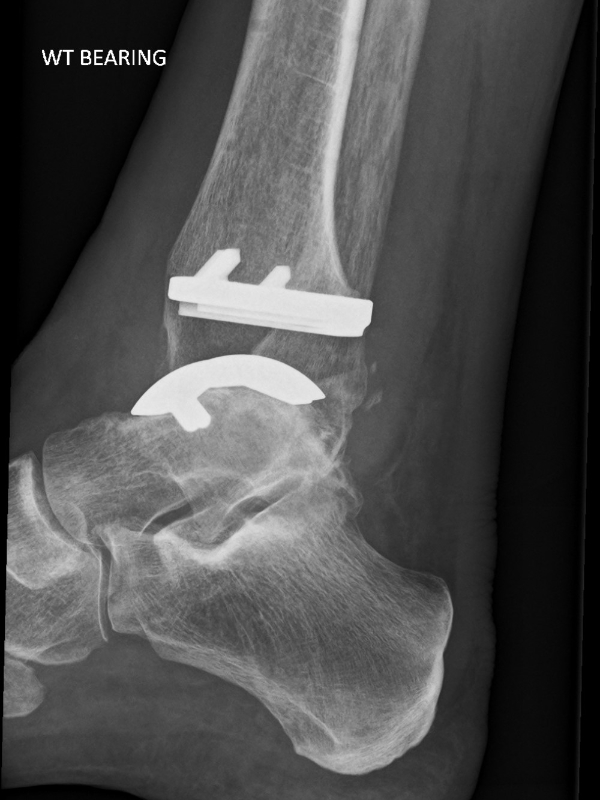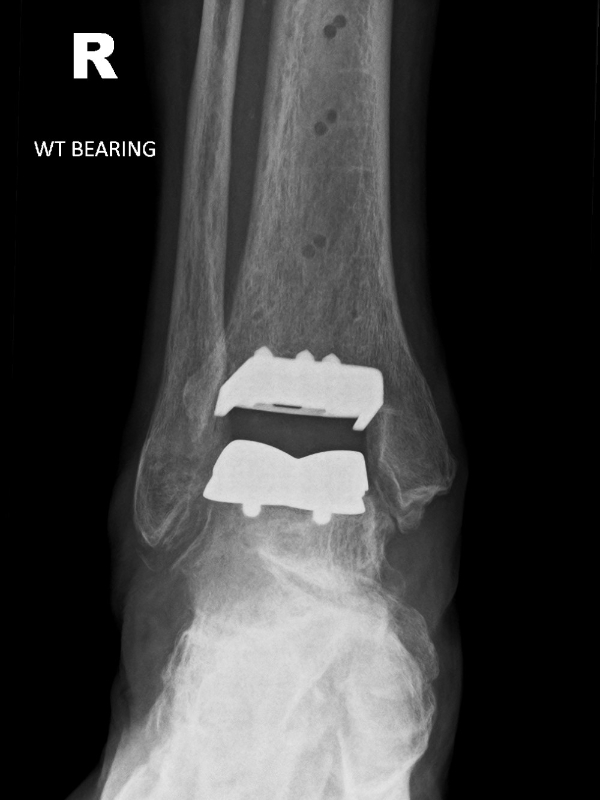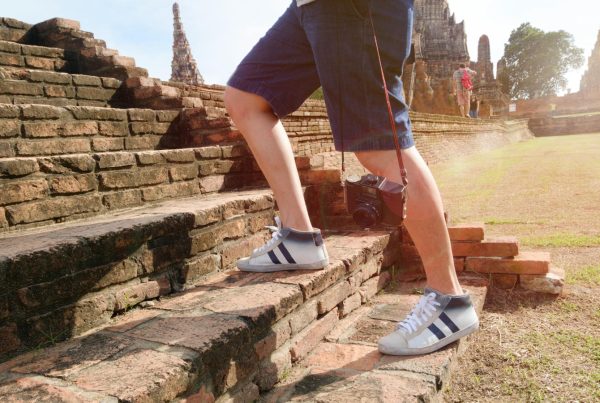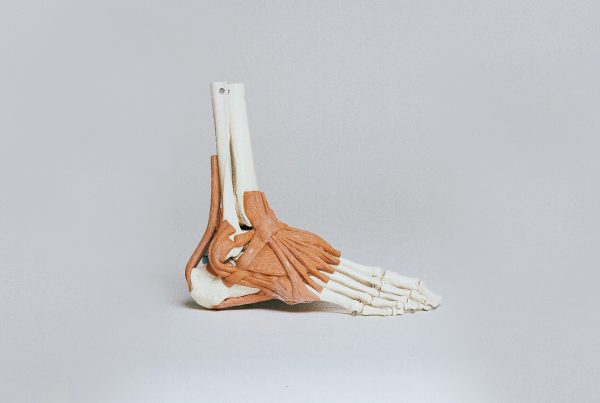Surgeon’s View
I first met Terry Taylor in 2011, when he had been suffering with right ankle pain for a few years. He had led a very active life, spending 36 years in the Royal Navy, retiring as a Captain. He had had many injuries to his ankle, playing volleyball and parachuting, but was still playing golf and tennis at that stage.
We discussed our various options and decided that he was not ready for surgery. We found that an explanation of the pathology, a course of injections and some pain killers were enough for a few years.
He returned to see me in January 2020 by which time he had become extremely limited. We discussed our options and decided to proceed with an ankle replacement. I was concerned that the blood supply to his foot was not 100%, and so we had him quickly reviewed and cleared by our vascular surgeon. I was also concerned that he might find the post-op regime difficult, but again our physiotherapists at the Winterbourne had him proficient on crutches and a K9 walker within a morning.
The operation went ahead on 14th March 2020. It was the last elective operation I performed before the lockdown. I am delighted to say that all went well.
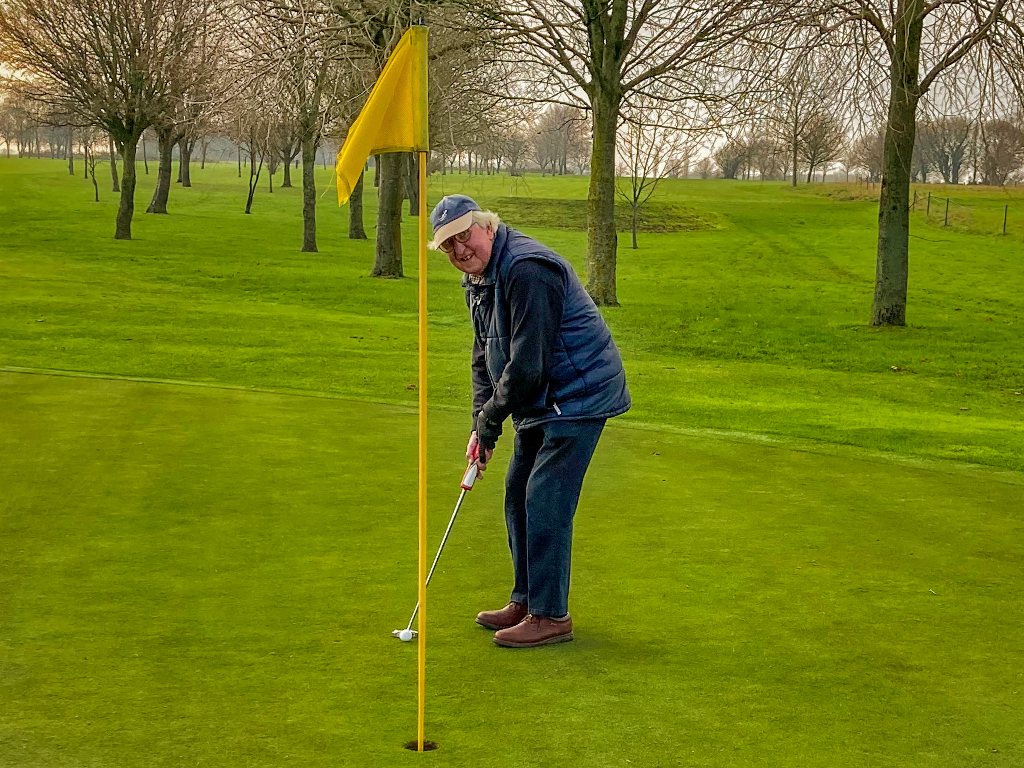
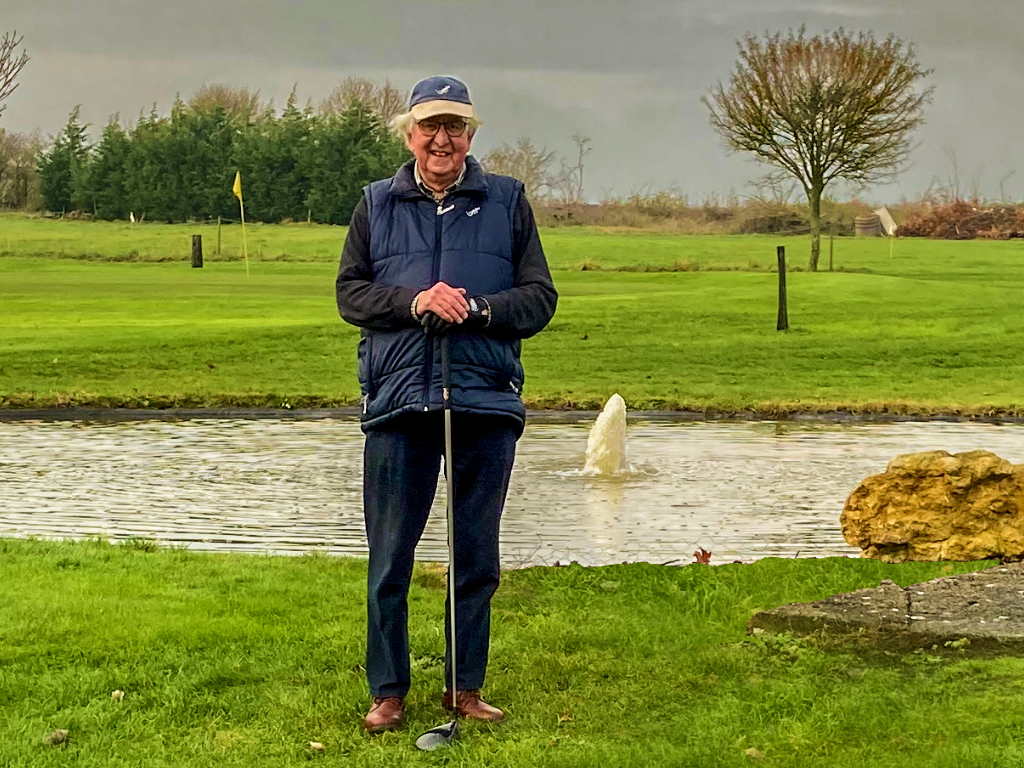
Patient’s View
When I was first referred to Nick Savva by my GP in 2012 I was 71 and experiencing increasing pain from arthritis in my right ankle. We discussed the options for fusion and ankle replacement, but he felt that I was not quite ready for surgery and the longer I could wait the better.
Over time the pain gradually increased and in 2016 he gave me a course of three Ostentil injections which gave no true benefit. At that stage I was hesitant about surgery having heard mixed reports from acquaintances as to the outcome. However, by the beginning of this year and aged 79, the arthritis had worsened further, and after discussion, I opted to have an ankle replacement operation. This was carried out at the Winterbourne hospital in Dorchester in March 2020 and was, incidentally, the last operation conducted by Mr Savva before lockdown.
The operation has been a complete success, and for the first time in a decade I am totally without pain, able to walk normally, and enjoy full articulation of foot and ankle. The scar has disappeared and I am back on the golf course (but must report that my game has not shown the magical improvement I had hoped for!)
From the outset I have had the greatest confidence in Mr Savva’s expertise and could not recommend him more highly.
Terry Taylor
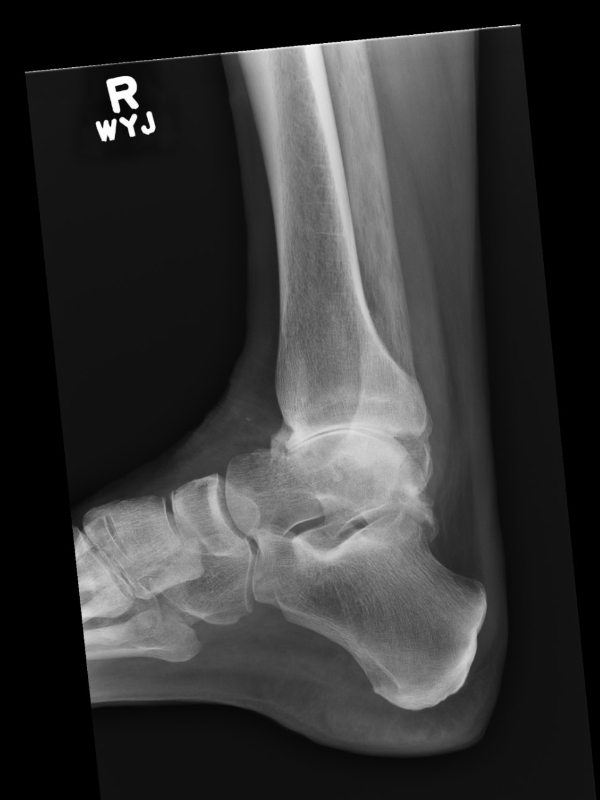
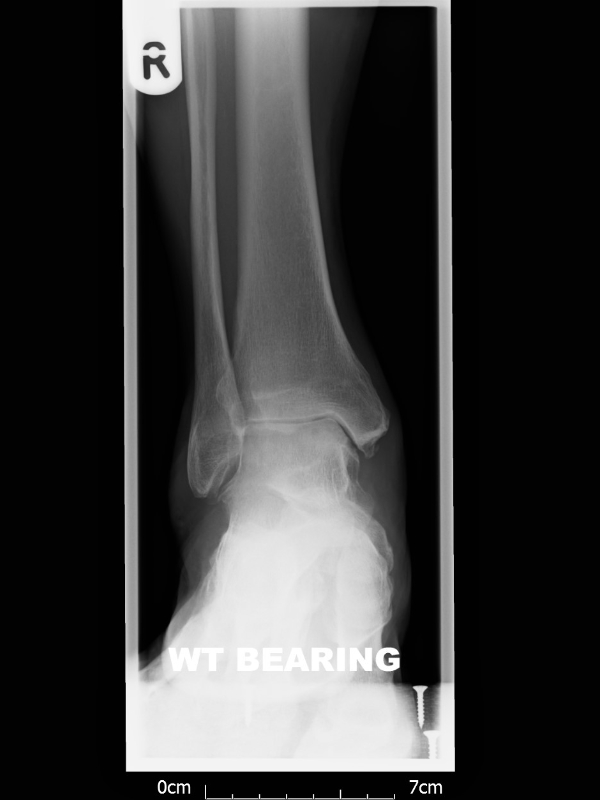
Surgical Options for Ankle Arthritis
The two main surgical options for ankle arthritis are an arthrodesis (fusion), or a total ankle replacement (TAR).
Arthrodesis (Fusion)
Arthrodesis has been the gold standard for ankle arthritis for many years. It can be performed in an open or arthroscopic (keyhole) fashion. The principle of the procedure is that the joint is roughed up to convince the body that it is broken bone and so heals it as one rigid bone. The pain goes as the joint heals.
Screws, plates or nails are often used to hold the bones in the correct position while they heal. For the ankle this is at 90 degrees to the leg. Unfortunately, the limb usually needs to be in a plaster or boot for a month or two post-op and the patient on crutches, or similar, partial or non-weight bearing.
The advantages of a fusion are that it is very reliable and has a very long track record.
There are disadvantages however. You will be on crutches in plaster for a month or two. Arthritis may evolve elsewhere in the ankle or foot some years later. There is quite good evidence that stiffening one joint puts extreme stress on the joints either side of the fused joint. This increases the chance of these adjacent joints becoming arthritic and painful. Further surgery is therefore always a risk.
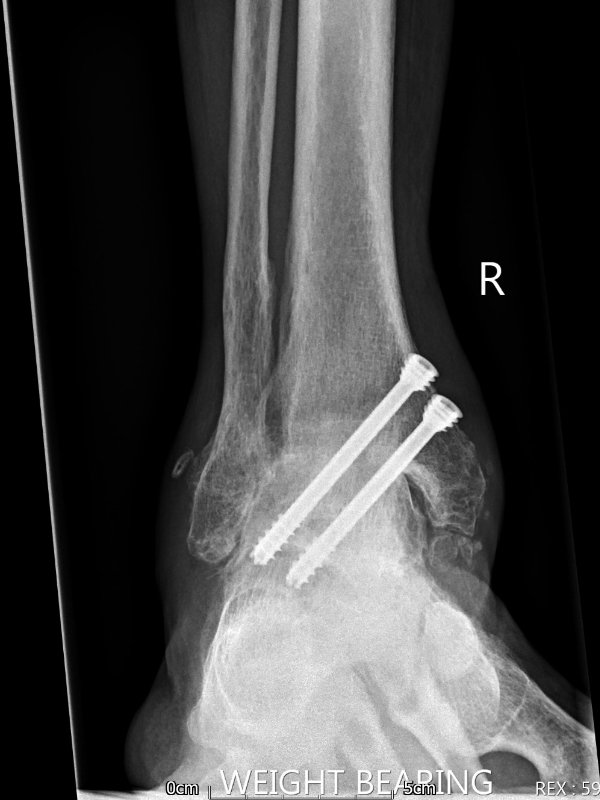
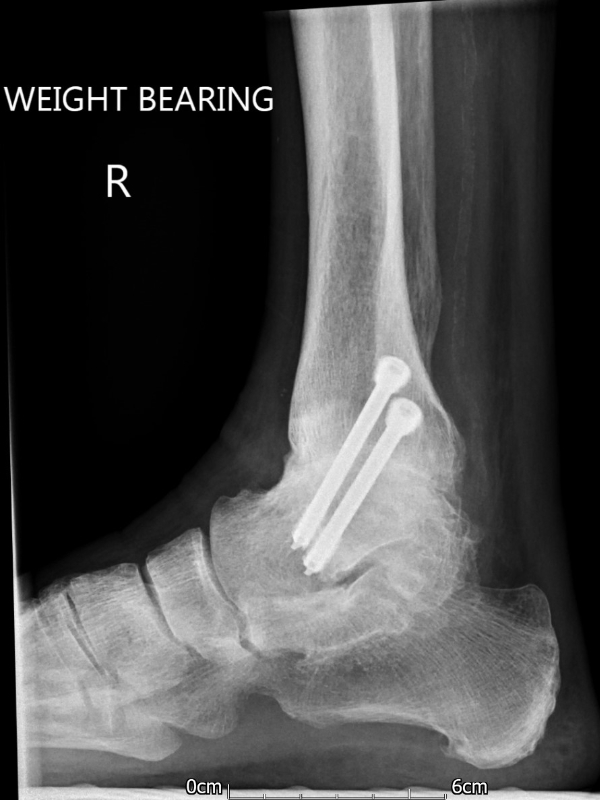
Total Ankle Replacement
Total Ankle Replacement has been around for many years but has only recently matched up to hips and knees in terms of reliability. The anatomy is complex, making correct positioning of implants difficult. The latest versions however have very accurate well designed jigging systems that overcome these problems. The results of this generation of ankle replacement have improved significantly.
A significant advantage of TAR is that there only needs to be a limited period of non-weight bearing, whilst the wound heals. Movement is also maintained, which preserves the joints either side, reducing the risk of surgery to other joints in the future.
The main disadvantage is that, like all arthroplasty, they do wear out or loosen with time, and so further surgery in the future is always a possibility. The current survivorship figures suggest that 90% last to 10 years. You can find out more here.
